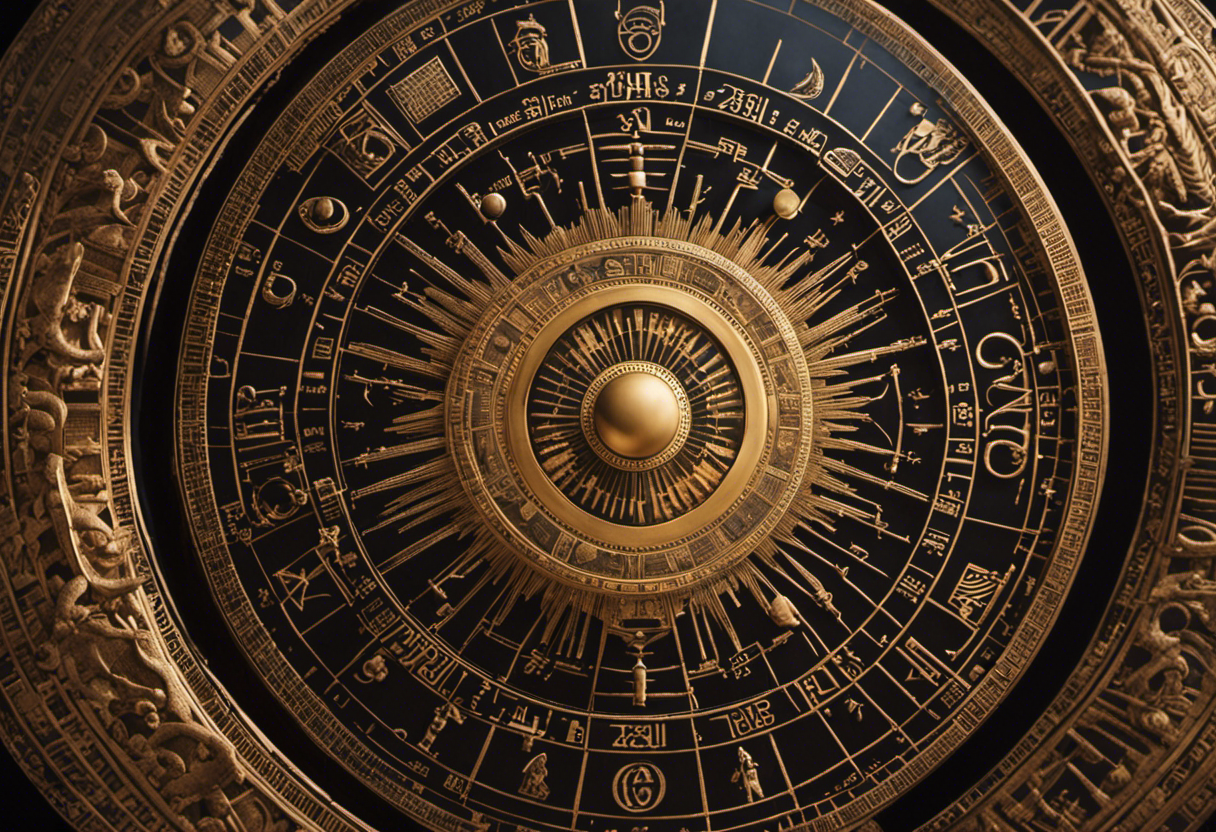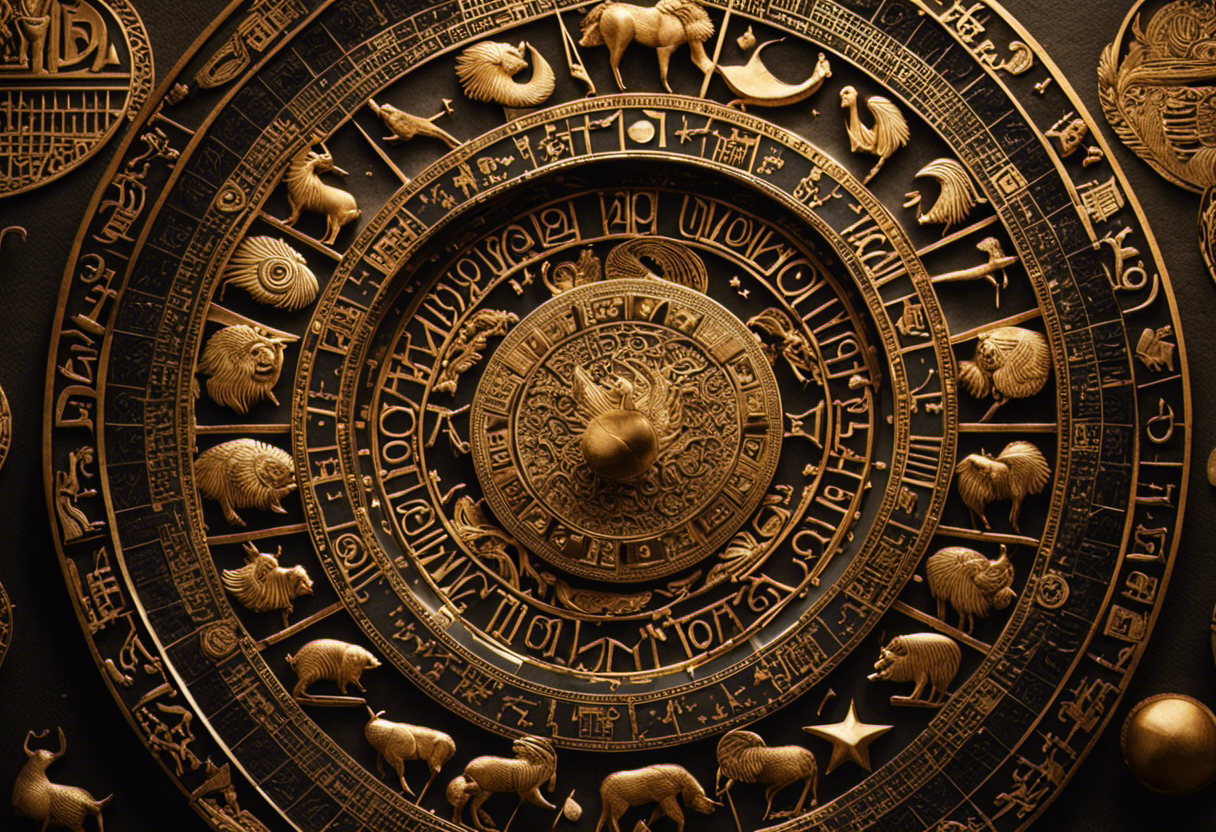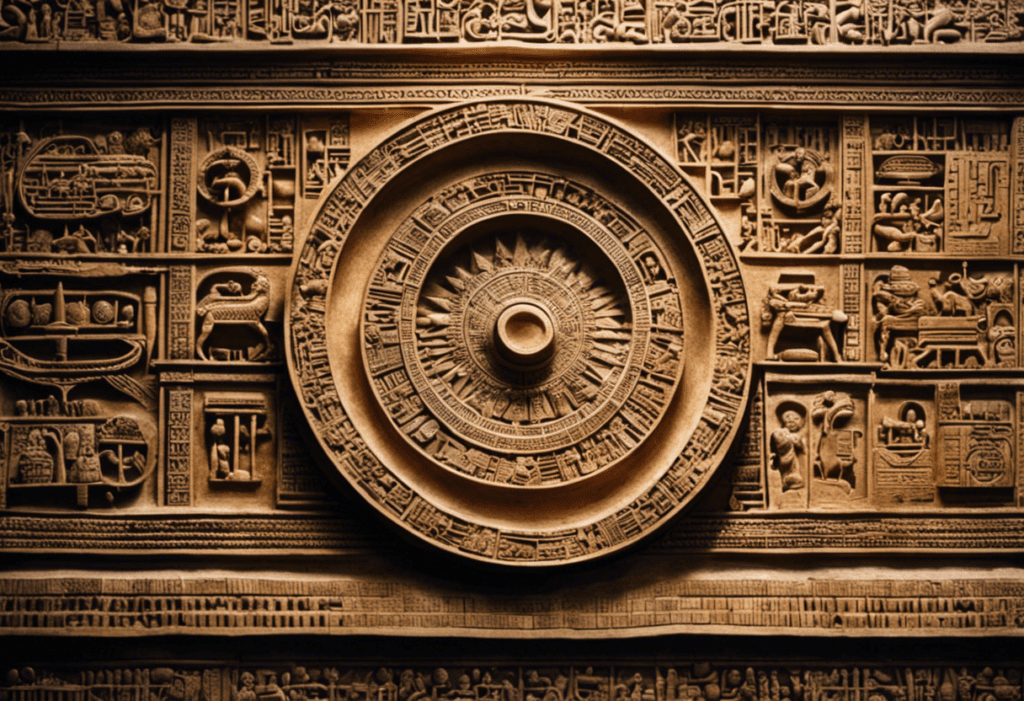In the vast tapestry of ancient civilizations, the Babylonians wove a sophisticated calendar system that still captivates scholars today.
Delving into the depths of this remarkable civilization, this article explores the enigmatic question: How many days comprised a Babylonian year?
Through meticulous research and analysis, we will unravel the intricacies of the Babylonian calendar, drawing comparisons with the modern Gregorian calendar.
Prepare to embark on a journey of discovery as we unravel the mysteries of time in the ancient world.
Key Takeaways
- The Babylonian calendar system was developed in ancient Mesopotamia and consisted of 12 lunar months, with intercalary months added to align with the solar year.
- The Babylonian year was primarily lunar-based, with months beginning and ending with the visible crescent of the new moon. Solar movements were incorporated for accuracy, but the length of the Babylonian year varied, approximately 354 days.
- Babylonians counted the days in a year through meticulous astronomical observations and mathematical calculations, observing celestial bodies and integrating lunar and solar movements. They had advanced knowledge and dedication to understanding time.
- The Babylonians recognized the misalignment between their lunar-based calendar and the solar year, and therefore added an intercalary month every few years. Their calculations were based on the observation of celestial bodies, highlighting the significance of Babylonian astronomical records.
The Babylonian Calendar System


The complexity of the Babylonian calendar system is evident in its meticulous calculation of lunar and solar movements. The origins of the Babylonian calendar can be traced back to ancient Mesopotamia, where the need to track time and agricultural cycles led to the development of a sophisticated calendar system.
The Babylonians recognized the importance of both lunar and solar movements in determining the length of a year. Their calendar, known as the lunisolar calendar, consisted of 12 lunar months, with each month beginning at the first sighting of the new crescent moon. However, since the lunar year is shorter than the solar year, the Babylonians had to make adjustments to ensure that their calendar accurately reflected the changing seasons. To achieve this, they introduced intercalary months, which were added periodically to align the lunar months with the solar year.
This complex and precise calendar system had a significant impact on ancient Babylonian society. It allowed them to plan agricultural activities, track celestial events, and schedule religious festivals and rituals. The Babylonian calendar also played a crucial role in their astronomical observations and predictions, contributing to advancements in the field of astronomy.
Overall, the Babylonian calendar system was a testament to the mathematical and scientific knowledge of this ancient civilization.
Understanding the Babylonian Year


By studying the intricacies of the Babylonian calendar system, researchers gain a deeper understanding of the interplay between lunar and solar movements in determining the length of a year in ancient Mesopotamia. The Babylonians were highly skilled astronomers and mathematicians who developed a sophisticated calendar based on their observations of celestial bodies. This calendar system was used not only to track time but also to determine the dates of important Babylonian festivals.
The Babylonian calendar was primarily lunar-based, with months beginning and ending with the visible crescent of the new moon. However, the Babylonians were also aware of the importance of incorporating solar movements into their calendar to ensure its accuracy. They used astronomical calculations to reconcile the lunar months with the solar year. This involved intercalating additional months in certain years to align the lunar calendar with the solar year.
The length of a Babylonian year varied depending on the interplay between lunar and solar movements. On average, a Babylonian year consisted of 12 lunar months, making it approximately 354 days long. However, due to the misalignment between the lunar and solar cycles, additional months were periodically added to keep the calendar in sync with the seasons.
Counting the Days in a Babylonian Year


Researchers have discovered that the Babylonians counted the days in a year by meticulously observing the movements of celestial bodies and incorporating both lunar and solar cycles into their calendar system. This ancient civilization had a sophisticated understanding of timekeeping and used various counting methods to track the passing of days. Here are three fascinating aspects of Babylonian timekeeping that can evoke a sense of wonder:
-
Lunar-Solar Integration: The Babylonians recognized that the lunar month was approximately 29.5 days long, while a solar year consisted of roughly 365.25 days. To reconcile these two cycles, they developed a calendar with 12 lunar months and added an intercalary month every few years.
-
Astronomical Observations: Babylonian astronomers made meticulous observations of celestial bodies, such as the sun, moon, and stars, to determine the lengths of days, months, and years. They used sophisticated instruments and mathematical calculations to accurately measure and record these observations.
-
Cultural Significance: The Babylonians believed that the movements of celestial bodies held great significance in their daily lives. They associated certain celestial events, such as eclipses, with omens and believed that understanding the patterns of the heavens would bring them closer to the gods.
The Babylonians’ counting methods and ancient timekeeping practices demonstrate their advanced knowledge and dedication to understanding the passage of time. These achievements continue to inspire awe and admiration for their scientific and cultural contributions.
The Length of a Babylonian Year


A thorough examination of Babylonian astronomical records reveals the meticulous calculations used in determining the length of a Babylonian year. The Babylonians were ancient astronomers who developed a sophisticated system for measuring time and tracking celestial events. Their astronomical calculations were based on careful observation of the movements of celestial bodies, such as the sun and the moon.
The Babylonians believed that the year was made up of 12 lunar months, but they recognized that this did not align perfectly with the solar year. To compensate for this discrepancy, they added an intercalary month to their calendar every few years. This allowed them to keep their calendar in sync with the seasons.
The historical significance of Babylonian astronomical calculations cannot be overstated. Their methods laid the foundation for later civilizations, such as the Greeks, who built upon their knowledge and further developed the field of astronomy. The Babylonians’ understanding of the length of a year and their ability to accurately predict celestial events were remarkable achievements for their time.
Comparing Babylonian and Gregorian Calendars


The Babylonian and Gregorian calendars’ differences in structure and astronomical basis highlight the complexities of time measurement systems throughout history. The Babylonian calendar, which was used in ancient Mesopotamia, was based on a lunar cycle and consisted of 12 months of alternating lengths. The Gregorian calendar, on the other hand, is a solar calendar with 12 months of fixed lengths.
The history of calendar systems is fascinating and reflects the cultural and scientific advancements of different civilizations. It is a testament to humanity’s desire to understand and organize time.
The impact of calendar systems on society cannot be underestimated. They provide a framework for religious and cultural practices, as well as for economic and agricultural activities. Calendars help communities plan festivals, determine planting seasons, and coordinate social events. They also serve as a means of recording history and tracking the passage of time.
Conclusion
In conclusion, the Babylonian calendar system had a unique way of counting the days in a year. Unlike the Gregorian calendar, which has 365 or 366 days, the Babylonian year consisted of 12 lunar months, totaling approximately 354 days.
However, to align their calendar with the solar year, the Babylonians added an intercalary month every few years. This resulted in a more accurate measurement of time, although still not as precise as the Gregorian calendar.
The fascinating Babylonian calendar provides insight into ancient timekeeping methods.



